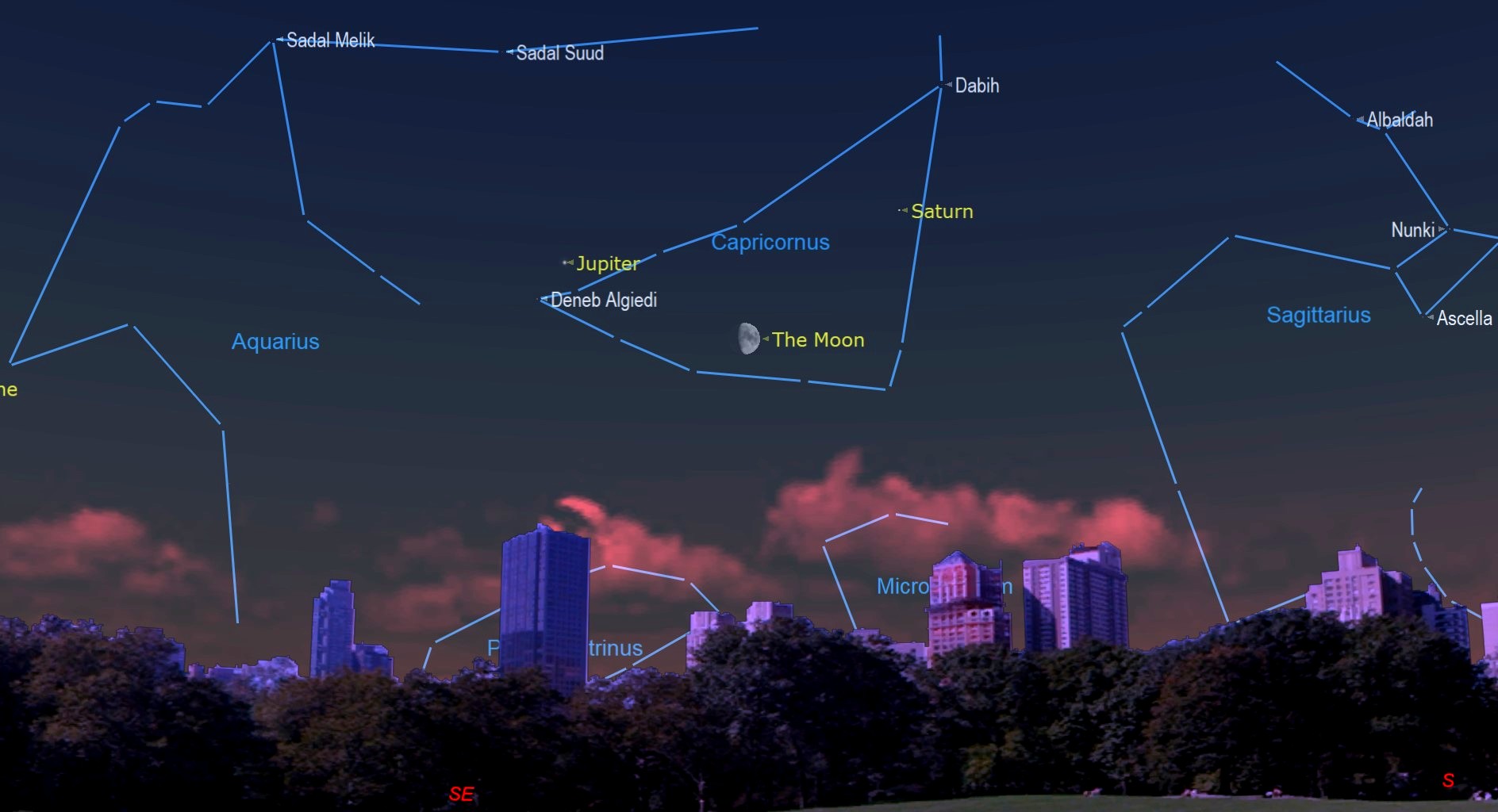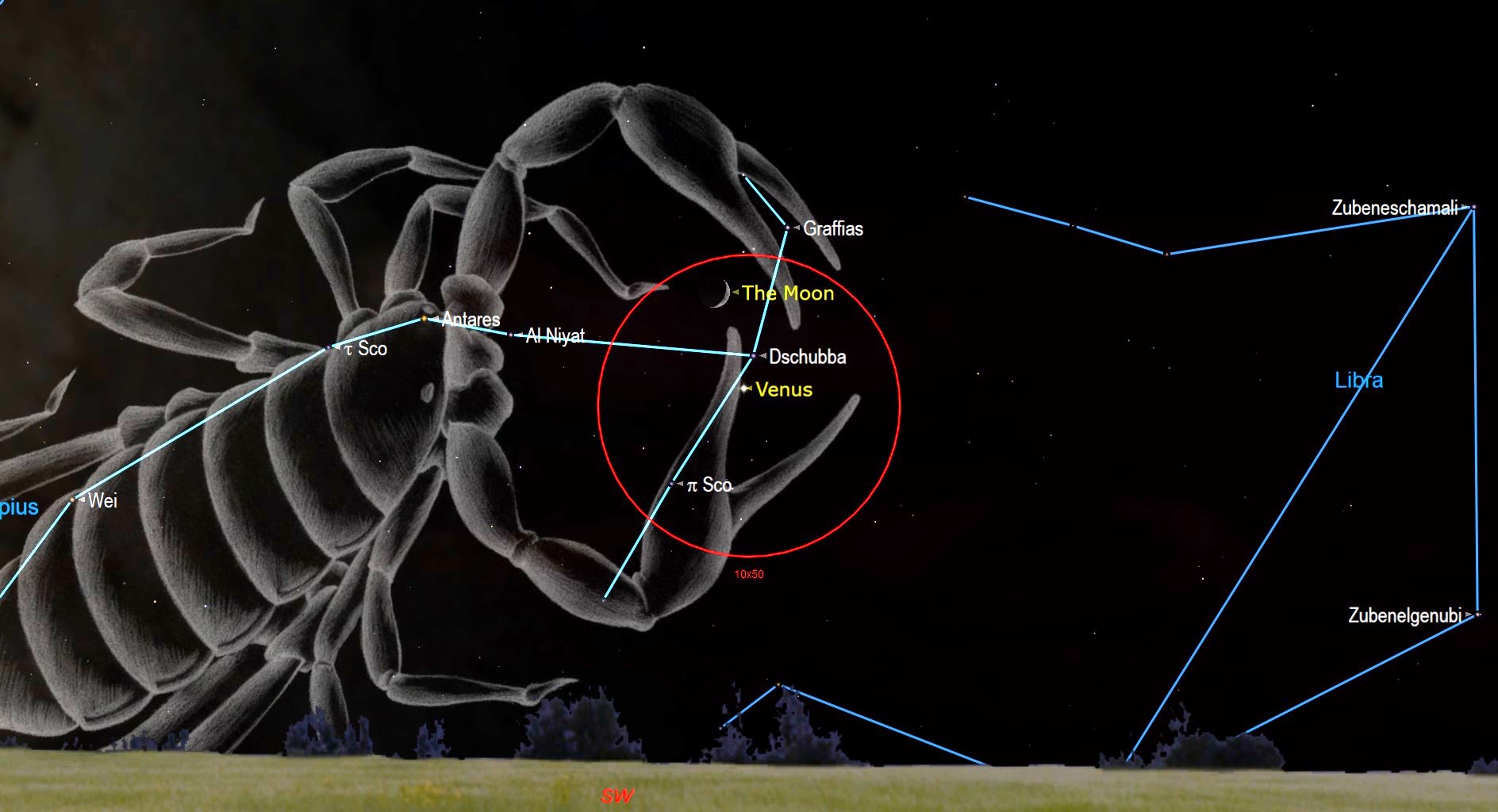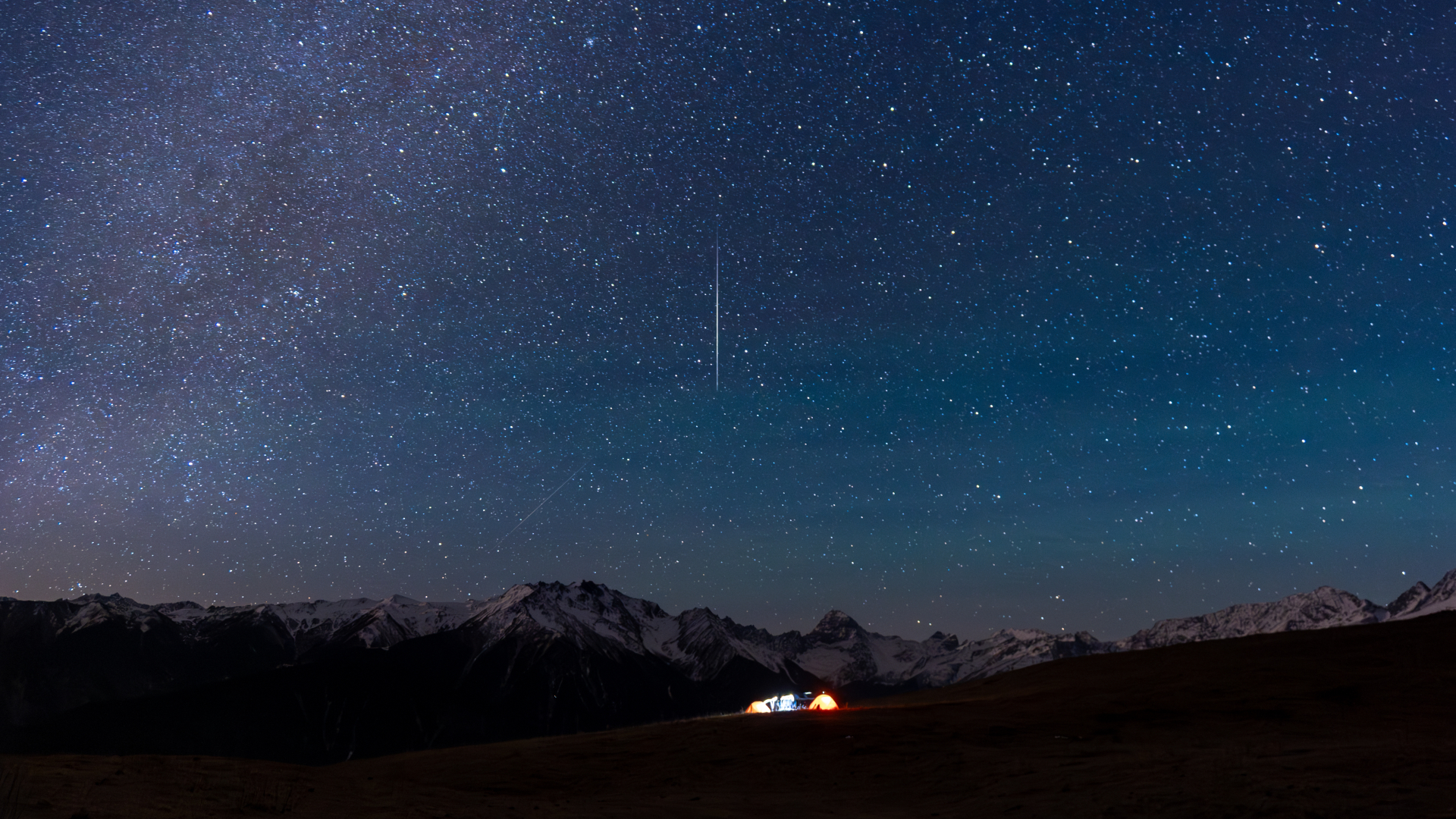Look up! The moon and 3 planets will gather after sundown this week

Between Saturday and Thursday evenings (Oct. 9 to Oct. 14), the moon will visit not one but three bright planets: Venus, Saturn and Jupiter.
Venus will pair off with a slender crescent moon, while Saturn and Jupiter will join with a waxing gibbous moon the following Thursday. Here are the specifics of each gathering and if you need it, we also have a guide to the brightest planets in the night sky (and when to see them).
An eye-catching tableau!
On Saturday evening, the moon will be nearly four days past new phase (16% illuminated), making it a much more obvious target to see both with binoculars as well as the naked eye. And its companion will be the brightest of all planets, Venus. This dazzling "evening star," shining at a magnitude of -4.3 — a radiance nearly five times brighter than Jupiter and 85 times that of Saturn — will be readily visible hovering about 2 degrees below and slightly to the right of the moon, making for an eye-catching sight in the southwestern sky. (Reminder: Your fist held at arm's length covers about 10 degrees of sky.)
Glittering Venus flames into view soon after sunset. Since late last spring, the planet has remained at about the same low altitude in the dusky sky (for viewers at mid-northern latitudes); it's hardly any higher after sunset than it has been since June, but three factors are improving its visibility these days nonetheless:
- Venus is growing a little brighter as it rounds the sun and speeds toward Earth.
- Twilight fades faster in the fall than in summer, leaving Venus to shine in a darker sky.
- Venus has shifted from the west to the southwest. Objects at a given altitude above the horizon in the southern part of the sky take longer to set than objects at the same altitude due west.
During October, Venus is finally climbing higher, and it now stays above the horizon until twilight is well and truly over. It will be at its highest and most observable in late November and early December. For inspiration, check out our feature on these amazing photos of Venus.
Getting better in telescopes
Behind Venus, Antares and the other stars of the "summer" constellation Scorpius slide westward during October on their way out for the year. On the evening of Oct. 16, look for the 1st-magnitude star Antares — the Heart of the Scorpion — shining south (lower left) of Venus by just 1.5 degrees. Antares is twinkling red and less than 1% as bright as the planet.
Venus is becoming a more interesting sight in telescopes as it draws nearer to Earth and becomes less gibbous. Watch it change in phase from nearly 60% illuminated now to less than half lit by the end of the month.
Breaking space news, the latest updates on rocket launches, skywatching events and more!
It will be exciting in the coming days and weeks to watch Venus grow in prominence in our early evening sky. Now that it is getting darker earlier in the evening, more and more people will be noticing it as they come home from work and school. Many will insist that it is a "new" attraction in the sky, even though it's been an evening object now for the last five months!

The Saturn and Jupiter encounters
Five nights after its tryst with Venus, the moon will have an encounter with two more bright planets, Saturn and Jupiter. On Thursday evening (Oct. 14), the moon will be parked almost midway between these two gas giants. The configuration will result in a broad and inverted isosceles triangle with the base angle formed by Saturn and Jupiter measuring 15 degrees in length and the vertex angle marked by the moon. Whenever they're in the sky, anyone who owns a telescope should immediately direct it on these three objects.
As twilight deepens on Thursday (at about 7:15 p.m.), you'll see the moon about one-quarter of the way up from the south-southeast horizon. It will be in its waxing gibbous phase, 70% illuminated. Incidentally, this is the best time to look at the moon with either binoculars or a telescope because it offers more viewing comfort to the eye as opposed to a full moon.
Using a telescope with lower optical power (magnifications of 20x to 40x), or even with good binoculars, you can then see a wealth of detail on the lunar surface. Around those times when the moon is half lit or in gibbous phase, those features lying close to the terminator — the line separating the light and dark part of the moon — stand out in sharp, clear relief. In fact, on Thursday night, the terminator will be slowly crossing over one of the moon's most prominent craters, Copernicus. It will become more and more revealed as the night wears on. For a full guide, we have a feature on Moon phases 2021: This year's moon cycles.
Lord of the rings
And if you look to the upper right of the moon on Thursday evening, you'll also see a rather bright, non-twinkling "star" shining sedately with a yellowish-white glow. The distance between the moon and this "star" will measure about 9 degrees.
That "star" is not a star at all, however, but rather the showpiece of the solar system: the planet Saturn.
Everyone remembers his or her first view of Saturn through a telescope. The magnificent ring system, the banded globe, and its faintly shimmering moons make Saturn an object of exquisite beauty. The most dramatic aspect is of course the rings; there is nothing else like them in the sky. Any telescope magnifying more than 30-power will show them. A 4-inch telescope at 100x or an 8-inch telescope at 200x will provide a memorable view.
The rings consist of billions of particles ranging in size from sand grains to flying mountains, which are made of, or covered by, water ice. This accounts for their very high reflectivity. The reason that "rings" is plural and not singular is that gaps of brightness differences define distinct sets of rings.
Big Jupe
And positioned a similar distance to the moon's upper left and shining with a brilliant silvery glow will be the largest planet in our solar system, Jupiter. In terms of brightness, "Big Jupe" is second among the planets to Venus. Currently, Venus rivals Jupiter in our evening skies, but only until around 8:15 p.m., when it sets. Thereafter, Jupiter, the "king" of the planets, will reign in the sky until just past 2 in the morning.
In a telescope, Jupiter is also a prime attraction. It's best observed during the 8 to 10 p.m. timeframe, when it's still high and its image reasonably calm. And its four bright Galilean moons are always performing. They seem like small stars, though two of them are really larger than Earth's own moon. It's indeed possible to watch the Galilean moons change their positions relative to each other from hour to hour and from night to night.
In fact, if you look at Jupiter with a small telescope or even steadily held binoculars on Thursday evening, you'll see three of those four big satellites. On one side of Jupiter will be Callisto and Io, while on the other side you'll be able to see Ganymede. Meanwhile, Europa will be passing directly in front of Jupiter.
And if you point out Saturn and Jupiter relative to the moon on Thursday to friends or family members, be sure to tell them that what they are seeing is merely an illusion of perspective. The moon is our nearest neighbor in space, and on this night, it will be 234,700 miles (377,700 kilometers) from Earth. Meanwhile, Jupiter is much farther away at a distance of 411.8 million miles (662.6 million km), while Saturn is even farther away at 895.2 million miles (1.44 billion km).
But on this night, they will be aligned as seen from our Earthly perspective to make them appear as a striking triangle in our early autumn sky.
Joe Rao serves as an instructor and guest lecturer at New York's Hayden Planetarium. He writes about astronomy for Natural History magazine, the Farmers' Almanac and other publications. Follow us on Twitter @Spacedotcom and on Facebook.

Joe Rao is Space.com's skywatching columnist, as well as a veteran meteorologist and eclipse chaser who also serves as an instructor and guest lecturer at New York's Hayden Planetarium. He writes about astronomy for Natural History magazine, Sky & Telescope and other publications. Joe is an 8-time Emmy-nominated meteorologist who served the Putnam Valley region of New York for over 21 years. You can find him on Twitter and YouTube tracking lunar and solar eclipses, meteor showers and more. To find out Joe's latest project, visit him on Twitter.
